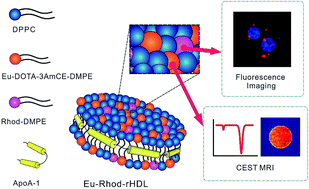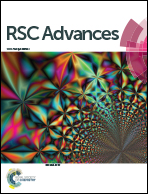A europium–lipoprotein nanocomposite for highly-sensitive MR-fluorescence multimodal imaging†
Abstract
A novel reconstituted high-density lipoprotein (rHDL) nanocomposite has been prepared for highly-sensitive magnetic resonance (MR)-fluorescence multimodal imaging. Such a nanocomposite is able to enhance the MR sensitivity up to 129 fold in comparison to the traditional small molecule MRI agent based on paramagnetic chemical exchange saturation transfer (PARACEST). It has also demonstrated specific targeting to macrophage cells, which shows great potential for the detection of atherosclerosis.


 Please wait while we load your content...
Please wait while we load your content...